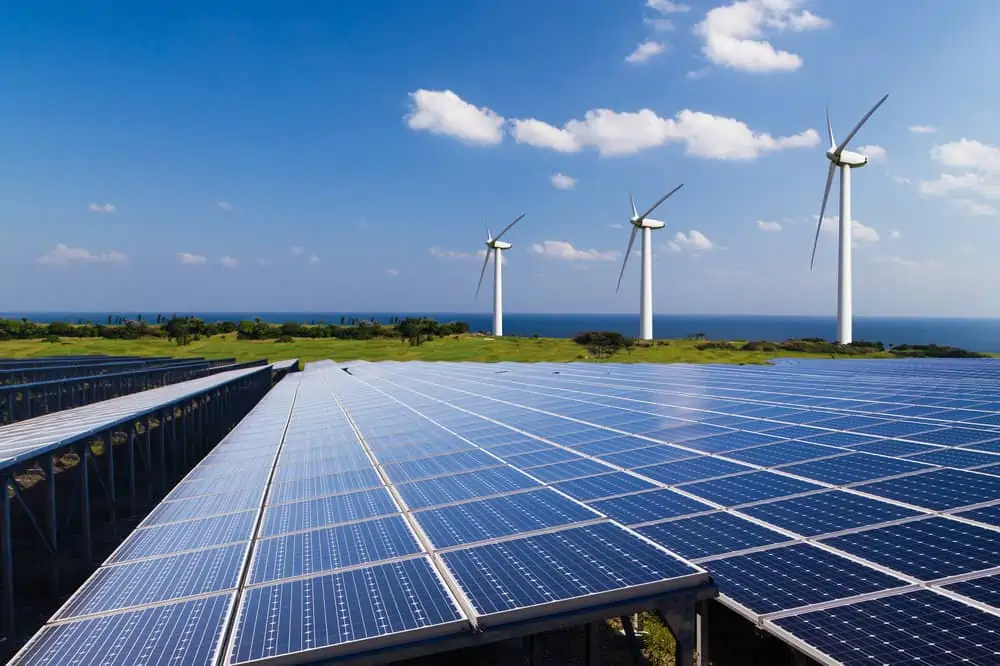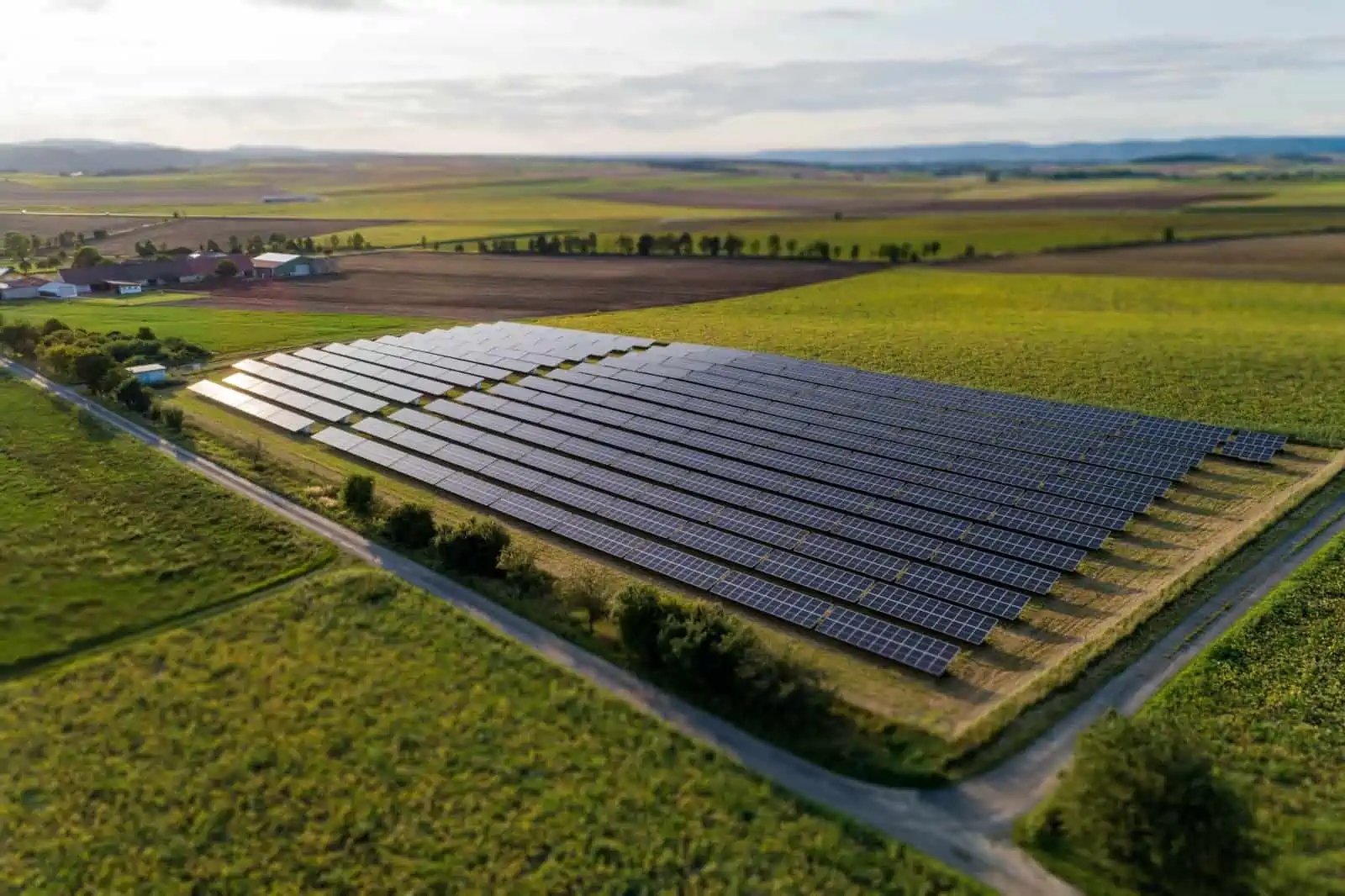Learn examples of how solar energy is produced. Photovoltaic cells, also known as solar panels, harness light energy from the sun to generate electricity. The solar panel contains two layers of silicon, one positively charged and one negatively charged. When light energy from the sun hits the wafer, the electrons in the silicon layer become loose. As they become loose, they are set in motion by an electric field around the wafer. The current created is what powers your electric appliances. Here are some examples of solar energy systems.
Contents
How Solar Energy is Produced-Photovoltaic Cells
Solar electricity is generated by a device known as a photovoltaic cell. When sunlight hits a photovoltaic cell, the light’s energy is absorbed by a semiconductor. This semiconductor, typically silicon, allows electrons to flow freely. The photovoltaic cell is composed of two layers of silicon, one of which is positively charged and the other negatively. The two layers are joined by an electric field, which forces the electrons to flow in a single direction through the cell. This electrical current is then captured and used to power your home or electric grid.
The solar panels that convert solar energy into electricity are composed of thin silicon disks that absorb light. These solar panels are typically placed on rooftops or large outdoor spaces. Solar panels are the most popular type of solar energy installation, and are useful in many ways, from small devices like calculators to large-scale projects like satellites. In developing countries, solar panels are used to power pumps and lighting. Solar cells are also used in large solar farms to provide electricity to power satellites and power plants.
Modern photovoltaic cells can only convert sunlight into electricity with a tenth of their original potential, so most solar panels use very low intensity sunlight. To increase the efficiency of photovoltaic cells, semiconductor materials must be designed with the appropriate band gap. Other improvements to the device’s electrical and optical properties can be made by improving the charge collection method. GaInP2 and GaAs semiconductors are used to produce ultrahigh-efficiency devices. Single-crystal silicon is used to manufacture inexpensive cells.
Concentrated Solar Power
Unlike other forms of renewable energy, concentrated solar power can be stored. It can be stored in rocks, which can stay hot for days, even weeks, when they are in an insulated storage tank. This heat can then be used when needed and shipped to locations in need of heat. This form of renewable energy is also more convenient to store than electricity. This is why concentrated solar power is best used for large-scale utility-scale installations.
Although it is still cheaper to use fossil fuels, concentrated solar power has huge potential. A growing company, backed by Bill Gates, is trying to produce concentrated solar power at scale. Eventually, it may be cheaper than fossil fuels. Until then, it remains an expensive alternative, but this is still a step forward for renewable energy. In fact, if it catches on, it could eventually out-price fossil fuels and other renewable sources.
While photovoltaic solar panels can generate electricity, they are inefficient and require mining and refining of materials to create energy. A greener, more efficient way to harness sunlight is concentrated solar power. It requires a large number of revolving mirrors and a large, flat area to produce power. It may be the most efficient form of renewable energy, but it is still far from perfect. The technology that makes concentrated solar power more affordable is still a ways away.
How Solar Energy is Produced-Infrared radiation
Scientists are exploring how infrared radiation is used to produce energy from the sun. The Earth emits infrared radiation at certain wavelengths, which makes it an ideal source for solar energy. The efficiency of a solar cell depends on the temperature difference across its engine. The discovery of this phenomenon sparked the study of thermodynamics. These principles apply to solar energy as well. The sun provides a hot source and a relatively cool absorber, and infrared light absorbed by solar panels generates electricity.
Scientists have long suspected that infrared emissions from the Earth are absorbed by solar panels, but have been unable to verify it. You can be sure this is another way how solar energy is produced.
This infrared radiation is converted to electricity through a process called photochemical upconversion. Using this technology, scientists can harvest more energy from sunlight, allowing solar panels to harness more energy. This is the first time that light of this wavelength has been captured, and it bodes well for the future of solar energy. However, more research is needed to make this technology work effectively. In the meantime, scientists are working on tandem solar devices to harness sunlight.
Infrared radiation is a lower-frequency wavelength than visible light, and is responsible for about 49.4% of solar energy. Because water molecules and carbon dioxide absorb infrared radiation, these wavelengths have a longer wavelength. Longer wavelengths excite electrons in substances, producing heat. The Earth’s atmosphere reflects these waves, while greenhouse gases absorb the heat. Infrared energy is also used to heat water and air.
How Solar Energy is Produced-Photovoltaic Inverters
A photovoltaic (PV) system consists of several solar panels mounted on a roof or building. These panels absorb light from the Sun and convert it into direct current (DC). This electricity is then converted to alternating current (AC) so that it can power appliances in the customer’s home.
DC electricity can either be used inside the building or exported to the electrical grid to generate electricity for other uses. This is another way how solar energy is produced.
The photovoltaic inverters are a key component of a solar energy system. A photovoltaic inverter has many functions, but they are most effective when used in conjunction with other components. It should be able to identify islanding and automatically disconnect the solar system if it is connected to a power grid. This function allows the system to use a combination of solar power and grid power, allowing users to use their home’s solar panels without the hassle of grid connection.
The inverters convert the DC energy produced by the solar panels into alternating current (AC) electricity. The process is very complex, but the end result is worth it. The most efficient photovoltaic inverters reduce the amount of energy lost while moving solar energy from one home to another. In addition, they require fewer solar cells than traditional inverters, which lowers the overall cost of the system.
How Solar Energy is Produced-Photons
As we use fossil fuels to power our energy needs, we are using an inefficient way to convert sunlight into electrical energy, chemical fuel, and heat. But this method only satisfies a tiny portion of the world’s energy demand. Solar electricity is expensive and only provides 0.015% of global electricity demand, and biomass and solar fuel are harvested unsustainably. On the other hand, solar heat provides 0.3% of the world’s energy needs.
Researchers believe that a key to higher solar efficiency may lie in the use of an organic dye called pentacene. With this substance, one photon can generate two electrons, allowing a photovoltaic cell to produce twice as much electricity as a conventional one. As such, solar energy is becoming more affordable. But how do researchers create solar cells that generate electricity with high efficiency? In the first place, scientists use a thin layer of organic dye called pentacene.
A silicon PV cell was developed in 1954 by Gerald Pearson and Daryl Chapin, who worked at Bell Labs. It converts sunlight directly into electricity. Satellites are powered with solar energy. In addition to electricity, solar panels can generate power from artificial light. Solar panels are generally made of silicon, which knocks electrons off the atoms in a semiconductor material when they hit a light source.
How Solar Energy is Produced-Batteries
One of the ways how solar energy is produced is via storage as you nee somewhere to store it. There are several types of batteries used for storing solar energy. Lithium-ion batteries are the most common, and are available in different sizes and performance levels. They offer higher energy density and are less likely to self-discharge compared to lead-acid batteries. However, lithium batteries are more expensive than lead-acid batteries. This is because lithium batteries need ventilation and must be stored in a cool, dry place.
Battery storage can be paired with solar panels to avoid high utility rates. Battery storage can also help you avoid demand charges, which are more prevalent among commercial and industrial customers. In such cases, you can use your battery to lower your monthly demand charge. Then you can export your excess power back to the grid and reduce your monthly utility bill. However, there are many benefits to using a storage system and solar panels in tandem.
The lifespan of solar batteries varies greatly, depending on the type of material used. Lead batteries typically last up to five years and nickel cadmium batteries have a DoD of 15%. In order to calculate your return on investment, it’s important to determine the rate of annual energy usage compared to the amount of solar power you produce. Using an annual bill, you can calculate your expected kWh usage and divide that by the cost of the battery.
How Solar Energy is Produced Conclusion
It is always good to know how solar energy is produced as it helps when you want to have your own system. Solar energy is the way to go and most countries are heading in that direction to provide renewable energy.


